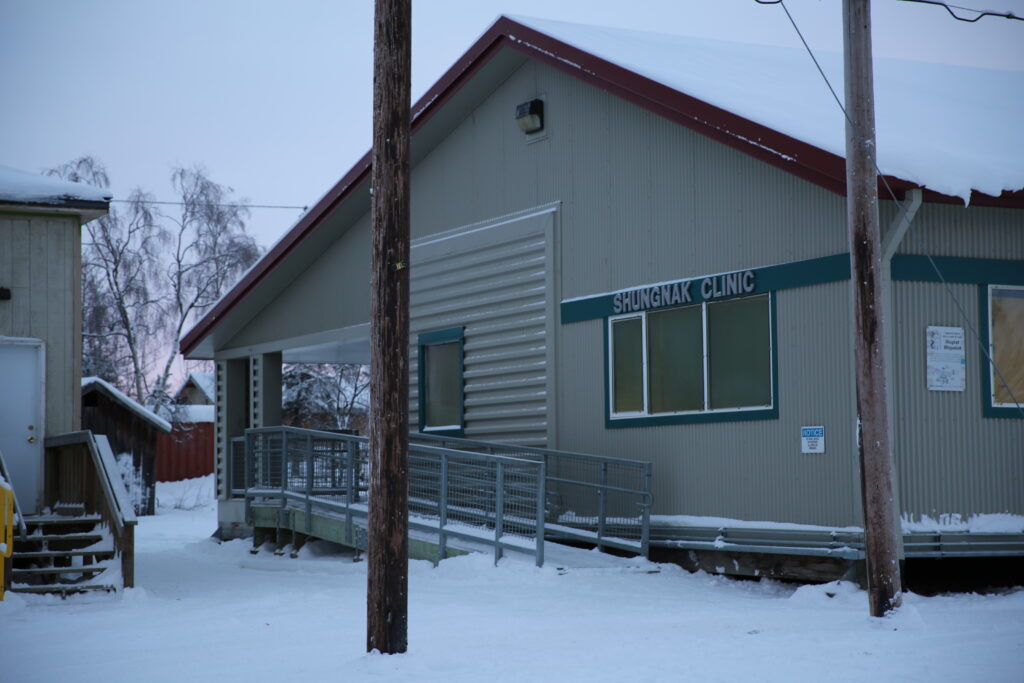Shungnak
Location
Shungnak is located on the winding shoreline of the Kobuk River about 150 miles east of Kotzebue, and about 10 miles downstream from the village of Kobuk.
Culture
Shungnak is a traditional Iñupiat Eskimo village based on a subsistence lifestyle, dependent on sheefish, whitefish, caribou, moose, ducks and berries. High school students from Kobuk attend school in Shungnak. The village has a population of 269.
History
Founded in 1899 as a supply point for mining activities in the Cosmos Hills, this Iñupiat Eskimo village was forced to move in the 1920s because of river erosion and flooding. The old site, 10 miles upstream, was renamed Kobuk by those who remained there. The new village was named Kochuk but later changed to Shungnak. This name is derived from the Eskimo word Issingak, which means jade, a stone found extensively throughout the surrounding hills.
Economy
Shungnak subsists mainly on fishing, hunting and trapping. Most full-time employment is with the school district, city, I.R.A. council, Maniilaq Association, two stores, and a lodge. The Bureau of Land Management (BLM) provides seasonal employment, usually hiring over 30 residents every year to fight fires. Shungnak also boasts a strong arts and crafts industry; residents sell finely crafted baskets, masks, mukluks, parkas, hats, and mittens.
Transportation
Shungnak is accessible by plane, barge or small boat in the summer, and by plane and snowmobile in the winter. The city’s lighted gravel runway is 3,400′, and has scheduled air service from most of the air carriers in the region. Small boats, ATVs, snow machines, and dog sleds are used for local travel and subsistence activities. Old trails along the river are still used for inter-village travel.
Facilities
Shungnak has a mayor/council form of government, employing a city manager, vice-mayor, clerk, treasurer, and police officer. Shungnak has two stores, a pool hall, three churches, a National Guard Armory, city office building, jail, post office, and village clinic. Water is pumped from a reservoir to a 200,000-gallon storage tank. Piped water and sewer is provided to approximately 60% of homes, the clinic, school and community building. A new city waste site and landfill has recently been completed.

